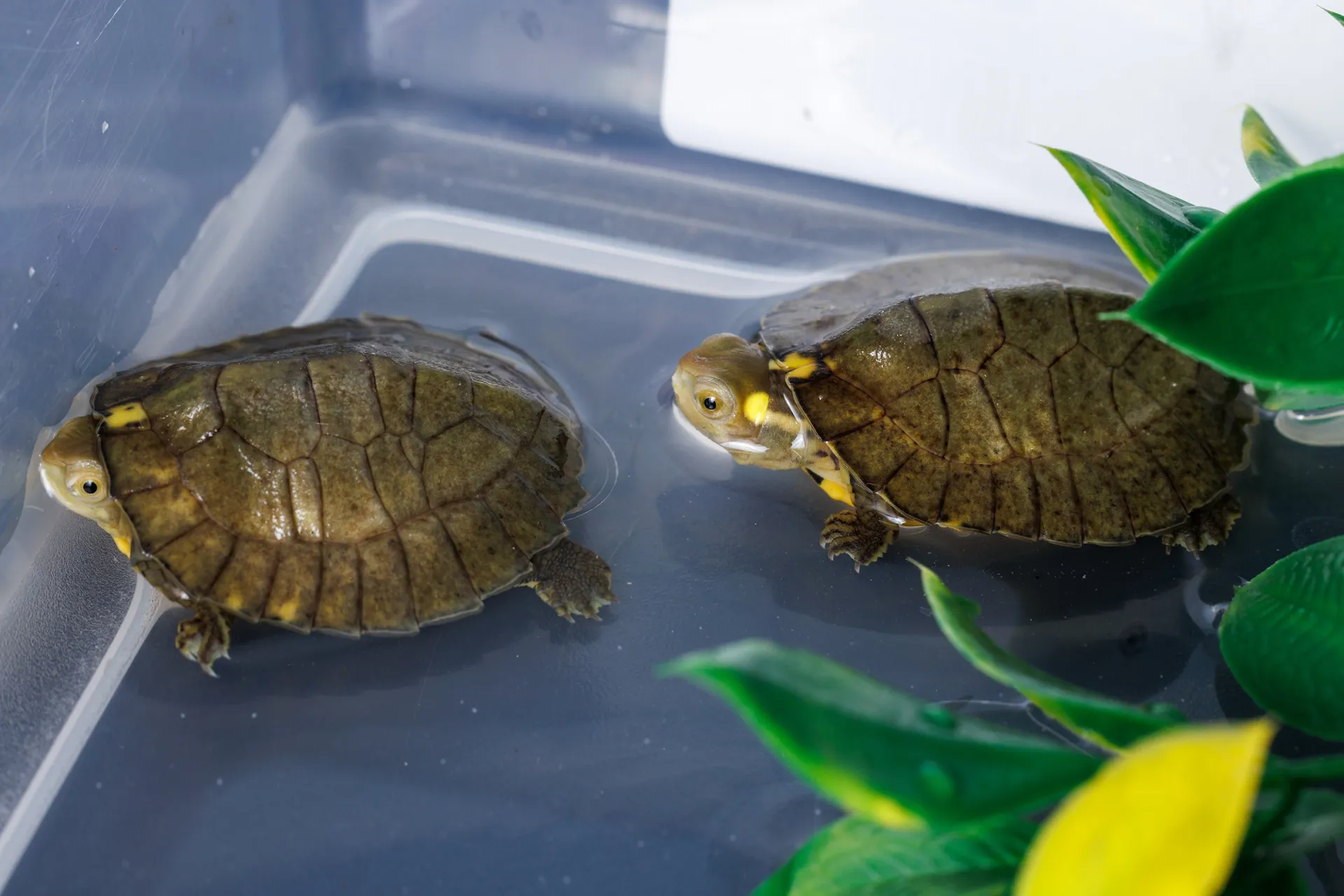Chattanooga, Tenn. (May 11, 2023) – Parents everywhere have it tough, but for Four-eyed Turtle moms, life in the wild is especially harrowing.
Found in forests and wetlands along a crescent-shaped arc range spanning China, Laos, and Vietnam, this critically endangered species is in steep decline thanks to a host of threats ranging from damming and habitat loss to the collection for the pet trade and harvesting their shells.
With prospects for wild Four-eyed Turtles so dire, the Tennessee Aquarium is celebrating the recent hatching of two Four-eyed Turtles in its Turtle Nursery. These eggs, which hatched May 1 and 2, were laid by a female who was, herself, hatched and raised at the Aquarium, a first for the Chattanooga institution.
“This was one of a clutch of two, and both have hatched. These are the first hatchlings we have from a female who hatched here in 2013,” says Bill Hughes, the Aquarium’s herpetology coordinator. “It’s taken her about 10 years, which is about the right time for this species to achieve reproductive maturity.”
Moms everywhere probably wish they had eyes in the back of their heads. In the case of Four-eyed Turtles, their name is in reference to the presence of a pair of distinctive, ringed eye spots — also known as ocelli — on the top of their heads. Rather than detecting misbehavior by their offspring, however, these eye spots are designed to confuse and misdirect would-be predators.
These eggs were laid by the off-exhibit female earlier this spring. They hatched after 68 and 69 days, respectively, in line with the 70- to 75-day incubation period that is typical for this species.
The newly hatched Four-eyed Turtles’ emergence from their eggs was a lengthy, tiring ordeal. Using an egg tooth — a special, temporary spur on its beak — the hatchlings created a hole called “a pip” in the eggshell. Widening out this initial exit point and finally emerging from the shell can take hours.
“This process is physically exhausting,” Hughes says. “The turtle has to take frequent breaks to build its energy back up.”
After spending a few additional days in the Aquarium’s incubation facilities and eating their first few meals, the turtles will be relocated to nursery habitats. Guests can view these new arrivals, and dozens of other baby turtles, in the Aquarium’s working turtle nursery in the River Journey building’s Turtles of the World gallery.
Hughes is responsible for maintaining the official Four-eyed Turtle studbook, an official record tracking the parentage of all babies of a particular species. The Aquarium has seen much success contributing to the population of this species in human care, an important step to forestalling the possibility of this rare turtle disappearing from the wild.
Since 2007, the Aquarium has hatched 54 Four-eyed Turtles, whose classification by the International Union for Conservation of Nature was downgraded from endangered to critically endangered in 2021. During this same period, the Aquarium also hatched 25 Beale’s Four-eyed Turtles, a closely related species.
To learn more about Four-eyed Turtles, visit tnaqua.org/animal/four-eyed-turtle/
